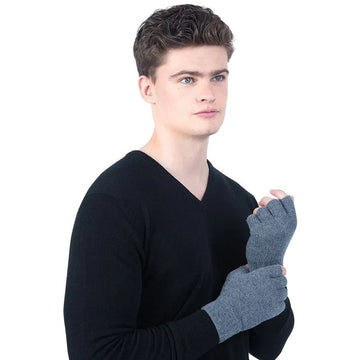Whilst the practical benefits and warmth of cashmere clothing cannot be understated, it goes without saying that wearing a scarf or coat made of cashmere provides any outfit with an additional air of luxury to it.
Part of the explanation for this is a mix between luxurious feel and rarity. Cashmere is a material that can typically only be harvested by combing the hair of a Kashmir goat when it is moulted, and it can take a lot of cashmere to make certain types of clothes.
As a result of this, pure cashmere is often priced accordingly, and most people will have one or two prized pieces in their collection, which is one of the reasons it is sometimes described as the “fibre of kings”.
However, there is also a far more literal reason why it gets that title, and to understand why, it is important to explore the history of the region which gives cashmere its name.
A Song Of Mountains, Goats And Fabrics
Whilst cashmere is typically found in Nepal and Mongolia as well, Kashmir is not only where the material gets its name but also where a lot of cashmere has been manufactured for thousands of years, and goat wool had been used in the region as early as circa 200 BC.
The exact origin point of Kashmir’s craft industry is unclear, with some claiming that shawls made from what would later be known as cashmere were used to ward off the freezing weather of the Himalayas as early as the reign of Emperor Ashoka the Great (304-232 BC).
The earliest reference to Kashmir’s weaving industry is in the 11th century AD, but it would take another two centuries for Kashmir to garner its status as the fabric of choice for the ruling class.
There are two stories told in Kashmir of how the material quickly became highly popular and desired. The first involves the poet and scholar Saint Mir Sayyid Ali Hamadani, who according to legend brought 700 craftsmen with him from Iraq to Ladakh and was amazed by the quality of a pair of cashmere socks.
He would later give them to Sultan Qutubdin, the ruler of Kashmir at the time and suggested that the area could start weaving shawls, creating the industry from there.
The alternative story takes place around a century later and involves Sultan Zain-ul-Abidin, who brought weavers from the region of Turkestan to Kashmir and actively accelerated the local wool industry as part of the Bud Shah’s famed love of culture and the arts.
There is a chance that both stories are true as part of the gradual development of what would become the Kashmir shawl, but by the early 16th-century cashmere truly became the fabric of kings.
Babur And The Robes Of Honour
The direct link between cashmere and the ruling class was more definitively established by Babur, the first Emperor of the Mughal Empire in India.
He established the tradition of the khil’at, or the robes of honour that were given as gifts to members of the durbar court as a symbol of royal favour, typically as a result of a great single achievement or years of service.
Whilst initially the khil’at included a scarf, sash, shawl, trousers, a fitted jacket, shirt, gown, long coat and turban amongst other accessories, by the time Babur’s grandson Akbar was the ruler of the Mughal Empire, the tradition had changed to focus predominantly on Kashmir shawls.
This established a tradition of linking the quality of cashmere to the level of status a person had in Indian society in that era, with pashmina being gifted to nobles but the rare (and now illegal to sell) shahtoosh shawls being exclusively reserved for the royal family.














